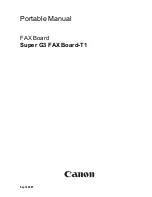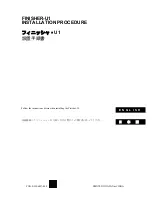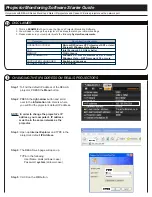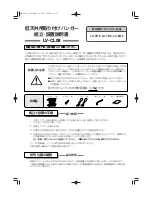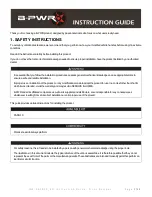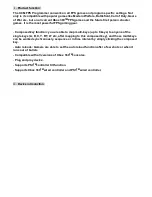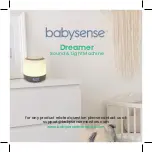
Tris-Compatible
Flat pH Sensor
(Order Code FPH-BTA)
The Tris-Compatible Flat pH Sensor
measures the pH of a solution or
semisolid. Because the glass membrane
is flat instead of a bulb, it is more
durable, easier to clean, and allows for flat surface measurements and smaller
sample sizes. It features a sealed, gel-filled, double-junction electrode, making it
compatible with Tris buffers and solutions containing proteins or sulfides. The
attached Electrode Amplifier stores a custom calibration.
Note:
Vernier products are designed for educational use. Our products are not
designed nor are they recommended for any industrial, medical, or commercial
process such as life support, patient diagnosis, control of a manufacturing
process, or industrial testing of any kind.
What's Included
pH Electrode
Electrode Amplifier connected via BNC
Electrode Storage Bottle, containing pH 4/KCl solution
Compatible Software and Interfaces
See
www.vernier.com/manuals/fph-bta
for a list of interfaces and software compatible
with the Tris-Compatible Flat pH Sensor.
Getting Started
1. Connect the sensor to the interface (LabQuest Mini, LabQuest 2, etc.).
2. Start the appropriate data-collection software (Logger
Pro
, Logger Lite,
LabQuest App) if not already running, and choose New from File menu.
The software will identify the sensor and load a default data-collection setup. You
are now ready to continue your experiment.
If you are collecting data using a Chromebook™, mobile device such as iPad
®
or
Android™ tablet, or a Vernier wireless sensor or interface, please see the following
link for up-to-date connection information:
www.vernier.com/start/fph-bta
Using the Product
1. Remove the storage bottle from the electrode by unscrewing the lid and
removing the bottle and lid.
2. Thoroughly rinse the lower section of the probe, especially around the
bulb-shaped tip, using distilled or deionized water.
3. Connect the sensor following the steps in the Getting Started section of this
user manual.
4. When you are finished making measurements, rinse the electrode with distilled
water.
5. Slide the cap onto the electrode body and then screw the cap onto the storage
bottle so the tip of the electrode is immersed in the storage solution.
Important:
Do not fully submerge the sensor. The handle is not waterproof.
Do not leave the electrode in acids or bases with concentrations greater than
1.0 M for periods longer than 5 minutes. See
www.vernier.com/ph-sensors
for other
types of pH electrodes.
Calibration
For many experiments, calibrating the Tris-Compatible Flat pH Sensor is not
required. A calibration equation is stored on each Tris-Compatible Flat pH Sensor
before it is shipped, which is used as a default by Vernier software.
For the most accurate measurements with this sensor, we recommend calibration. It
is a simple process that takes only a few minutes.
For instructions for Tris-Compatible Flat pH Sensor calibration using
Logger
Pro
computer software, see
www.vernier.com/til/2341
For instructions for Tris-Compatible Flat pH Sensor calibration using
LabQuest App, see
www.vernier.com/til/3394
For instructions for Tris-Compatible Flat pH Sensor calibration using
Graphical Analysis with a Chromebook, see
www.vernier.com/til/3631
For instructions for Tris-Compatible Flat pH Sensor calibration using
Graphical Analysis with an iOS or Android device, see
www.vernier.com/til/3630
In order to calibrate a Tris-Compatible Flat pH Sensor or to confirm that a saved
pH calibration is accurate, you should have a supply of pH buffer solutions that
cover the range of the pH values you will be measuring. For more information
about pH buffer solutions, including recipes for preparation, see
www.vernier.com/til/3625
2




